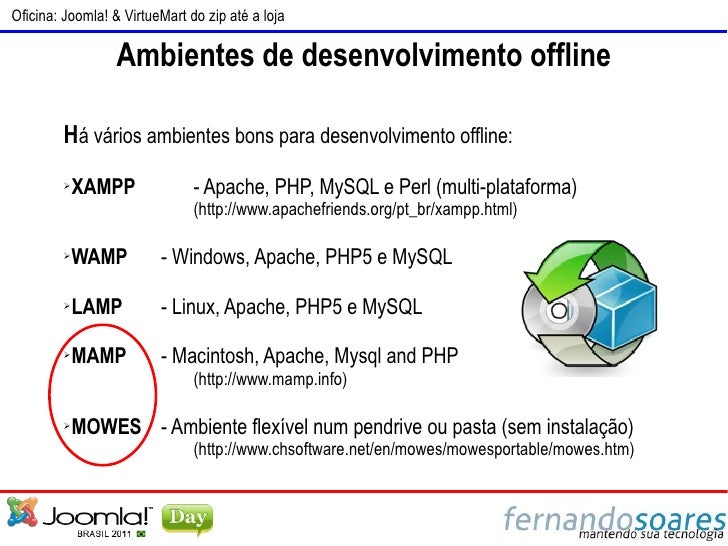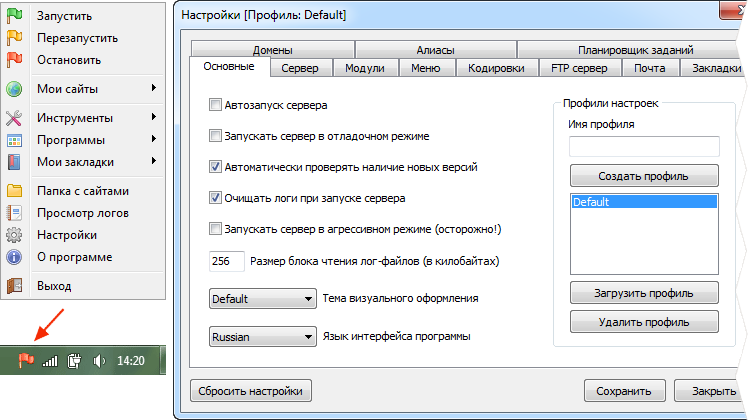Updates only 'Wampmanager', does not add any Apache PHP, MySQL or MariaDB versions. It is a cumulative update. It is not necessary to apply the old updates 3.0.1 to 3.2.3 before applying 3.2.3. There will be no changes to your Apache, PHP, MySQL, MariaDB settings and versions used; your local sites and databases will not be affected. I have wampserver 2.5 installed on my machine which has PHP 5.5.12 But I need to setup and application which is built in PHP 5.2. So how do I use this 5.2 version of PHP?

Topics
WampServer is a collection of web development tools that you can use to install an Apache server with PHP and MySQL database. An open source package that you need to test the function of your website locally. You need these tools if you do backend coding since this is the only way that you can view the website that you’re working on with a.
- Unattended/automated installation of WordPress on Ubuntu Server 16.04 LTS
Local Installation Instructions Local Installation Instructions
Use these instruction for setting up a local server environment for testing and development.
Installing WordPress locally is usually meant for the purpose of development. Those interested in development should follow the instructions below and download WordPress locally.
- AMPPS: Free WAMP/MAMP/LAMP stack, with inbuilt Softaculous Installer. Can 1 click install and upgrade WordPress and others as well.
- DesktopServer Limited: Free Windows/Macintosh server, creates multiple virtual servers with fictitious top level domains (i.e. www.example.dev) specifically for working on multiple WordPress projects.
- Mac App Store 1-click install for WordPress Installs a free, self-contained all-in-one bundle of WordPress and everything it needs to run: MySQL/MariaDB, Apache and PHP
- User:Beltranrubo/BitNami Free all-in-one installers for OS X, Windows and Linux. There are also available installers for WordPress Multisite User:Beltranrubo/BitNami_Multisite using different domains or subdomains.
- Instant WordPress is a free, standalone, portable WordPress development environment for Windows that will run from a USB key.

Software Appliance – Ready-to-Use Software Appliance – Ready-to-Use
You may find that using a pre-integrated software appliance is a great way to get up and running with WordPress, especially in combination with virtual machine software (e.g., VMWare, VirtualBox, Xen HVM, KVM).

Wamp Php Error Log

Another software that can be used is Parallels, which you would have to pay for unlike virtual machine software. It allows you to run both Mac and Windows on your machine.
A software appliance allows users to altogether skip manual installation of WordPress and its dependencies, and instead deploy a self-contained system that requires little to no setup, in just a couple of minutes.
- TurnKey WordPress Appliance: a free Debian-based appliance that just works. It bundles a collection of popular WordPress plugins and features a small footprint, automatic security updates, SSL support and a Web administration interface. Available as ISO, various virtual machine images, or launch in the cloud.
Unattended/automated installation of WordPress on Ubuntu Server 16.04 LTS Unattended/automated installation of WordPress on Ubuntu Server 16.04 LTS
Unattended installation of WordPress on Ubuntu Serverhttps://peteris.rocks/blog/unattended-installation-of-wordpress-on-ubuntu-server/
You can follow this guide by copy & pasting commands in a terminal to set up WordPress on a fresh Ubuntu Server 16.04 installation with nginx, PHP7, MySQL plus free SSL from LetsEncrypt.
You will not be prompted to enter any credentials or details like in other guides, everything is automated. You can even skip the installation wizard.
WAMP WAMP
If you don’t have IIS on your computer or don’t want to use it, you could use a WAMP Stack :
- WAMP Server or WAMP Server at SourceForge
- AMPPS WAMPStack – has Softaculous WordPress Installer
- EasyPHP – Has WordPress installer plugin
- BitNami WAMPStack – Has WordPress stack
These stacks can be downloaded freely and set up all the bits you need on your computer to run a website. Once you have downloaded and installed WAMP, you can point your browser at localhost and use the link to phpmyadmin to create a database.
Php 5.2.17 Download
Then, in order to install WordPress, download the zip file, and extract it into the web directory for your WAMP installation (this is normally installed as c:wampwww). Finally visit http://localhost/wordpress to start the WordPress install. (Assuming you extracted into c:wampwwwwordpress).
Tip: If you want to use anything other than the default permalink structure on your install, make sure you enable the mod_rewrite module in WAMP. This can be enabled by clicking on the WAMP icon in the taskbar, then hover over Apache in the menu, then Apache modules and ensure that the rewrite_module item has a checkmark next to it.
One of the great things about WAMP is that it allows you to easily switch between different versions of PHP. All you need to do is properly install the different versions of PHP for your machine. Here is how it’s done.
I recently upgraded to Windows 10 and took the opportunity to record a screencast on changing my PHP version in WAMP. The screencast, based on WAMP 2.5, is meant to compliment the steps below that are based on WAMP 2.2. I recommend that you read through the steps, watch the screencast, then come back to steps as you upgrade PHP on your version of WAMP.Download the zip file for the version of PHP for Windows that you wish to install.
Make sure that you download the correct Thread Safe version — either VC9 or VC11.
The VC9 builds require you to have the Visual C++ Redistributable for Visual Studio 2008 SP1 x86 or x64 installed. The VC11 builds require to have the Visual C++ Redistributable for Visual Studio 2012 x86 or x64 installed.
Create a new folder in
[path-to-wamp]/bin/php/php.#.#.#where [path-to-wamp] is the location that WAMP is installed on your machine and #.#.# corresponds to the version that you are installing, ie:c:/wamp/bin/php/php5.4.29Extract the all files from your download to the new PHP directory you created in the previous step. That list of files should look similar to the ones captured in the screenshot below.
Copy the following files from your old PHP directory to your new PHP directory.
php.iniphpForApache.iniwampserver.conf
These files contain your PHP, Apache and WAMP configurations.
Open the
php.iniandphpForApache.inifiles in your new PHP directory that you copied in the previous step. Search for any references to your old PHP version and replace them with the new PHP version. You will for sure need to update theextension_dirpath. Depending on what PHP extensions you have installed, you may need to update others as well.Start WAMP (if it’s not already started) and take note of all the active PHP settings and extensions that you are currently running. You will need this information in a future step.
Open your
php.inifile in WAMP and create a backup of this file.Exit WAMP entirely and restart it.
Once WAMP has restarted, select the option to Stop All Services.
With all services stopped, select the version of PHP that you wish to run from the PHP Version menu in WAMP.
Verify that all PHP settings and extensions are enabled from step 6. Note, there may be a few differences in the available settings and extensions in your new version of PHP.
Open up the
php.inifile in WAMP and add all required PHP configuration settings that are present in thephp.inibackup file that you created in step 7. The easiest way to identify missing configuration settings is to run a diff between your backupphp.inifile from step 6 and your newphp.inifile using a tool like DiffNow.While everyone’s PHP configuration is slightly different, below are a few required configuration settings that must be updated.
Specify the PHP error log directory:
error_log =Specify the PHP extensions directory:
extension_dir =Specify the PHP upload directory and max upload file size:
upload_tmp_dir =andupload_max_filesize =Specify the PHP timezone:
date.timezone =Specify your PHP session path:
session.save_path =
Update any custom configuration settings from your
php.inibackup file created in step 7 – again by running a diff. I work alot in Magento and explained in another post some of my PHP configuration for importing large databases in WAMP. Below are those values.Lastly, Restart All Services in WAMP for your new PHP configuration to take effect. …And give yourself a pat on the back, PHP in WAMP has been successfully upgraded!
As Jordan points out in the comments below, you’ll want to update PHP’s location in your Windows Path Variable (links to a post I wrote) following a PHP upgrade.
